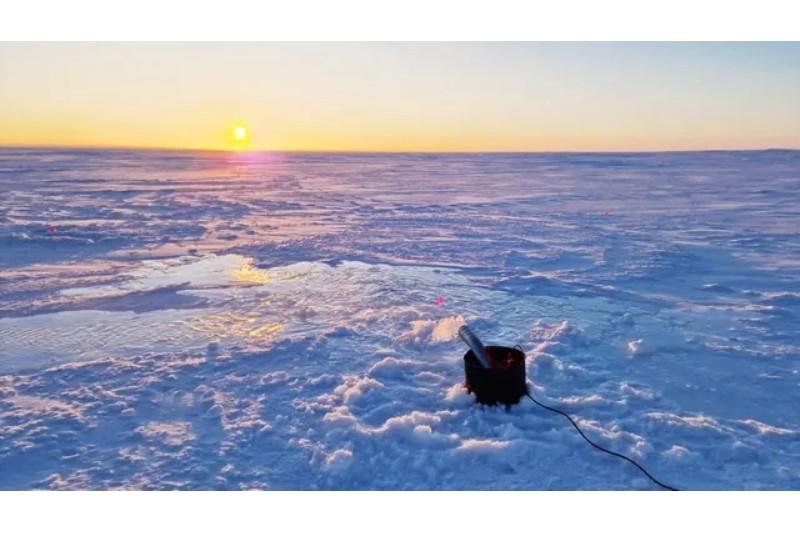
The Goal of Dutch Startup is to Preserve The Arctic Sea Ice
- Business
- March 1, 2024
Sea ice in the Arctic may vanish completely by summertime as early as the 2030s. Approximately three times the size of Texas, or more than 2 million kilometers of summer ice cover, have already disappeared since the United States government began measuring sea ice in 1979. The ice continues to weaken and thin.
The loss of ice accelerates global warming because it reflects sunlight, which the dark water absorbs. This affects not only the people and species living in the Arctic, but the entire world.
Arctic Reflections, a Dutch business, aims to preserve the remaining ice by thickening it throughout the winter to slow down its melting during the summer. Cofounder Fonger Ypma explains, “My background is really in the energy transition.” “And at some point, I realized that the first virtually ice-free summer in the Arctic is already inevitable, even with fast reductions in CO2 emissions.”
Ypma got its start from a Dutch custom in which towns would frequently fill lakes and canals with a thin coating of water during the winter when the temperature falls below freezing in order to help create enough ice for ice skating. Couldn’t we accomplish that on a larger scale, I wondered? Which is, naturally, a bit of an absurd notion. However, it later turned out that this had already been the subject of some scholarly research,” he explains.
For other purposes, the fundamental strategy has already been applied on a limited basis in the Arctic. With the use of ice roads, trucks can now access hard-to-reach locations, such as mines, by forcing water to the surface, where it condenses and solidifies. Ironically, the method has also been employed by oil corporations to create “ice islands” that shield drilling rigs.
However, Arctic Reflections want to investigate if the method may be applied across a far wider region to prolong the summertime ice cover. In the winter, when it’s much colder than in the summer, water would be pumped on top of the existing ice to create layers.
After studying the concept in the lab with Delft University experts, Ypma and fellow entrepreneur Tom Meijeraan founded the firm when it appeared potential. With Real Ice, a nonprofit organization located in the United Kingdom working on a related idea, the team recently went to the Canadian Arctic for preliminary field testing. The Arctic Reflections team is scheduled to visit Norway in April to conduct additional experiments and install equipment capable of measuring the resistance of the thicker ice to melting in warmer climates.
The vast expanse of the Arctic Ocean is a clear hurdle, but the team intends to capitalize on the ice’s movement to expand their coverage. According to Ypma, “ice could easily travel a thousand kilometers over a season in the Arctic.” The idea is to pinpoint key spots where ice can accumulate and subsequently drift to other regions.
There are still a lot of obstacles to overcome. To test the engineering, the team will need to construct a larger demonstration project after more data from the field experiments is gathered. For them to carry out large-scale work, new permissions will be required. They’ll also require money.
“We also want to cocreate this with Indigenous people, so that will take time,” Ypma says. He saw firsthand how desperately the Inuit people needed a solution during his visit to Canada. They told him that in order to get to the mainland, they require sea ice, and that the previous year, it took an extra month for the ice to thicken enough so that they could travel across it safely during the winter. By 2030, the company hopes to have a system in place. To pay for the work, it probably will sell something akin to carbon credits and apply for government financing.
It’s just a stopgap measure while the global community tackles the more significant problem of decarbonization. According to Ypma,“If you don’t bring down CO2 emissions, then doing this is pointless,” However, other research indicates that sea ice may continue to melt even with significant reductions in emissions. It may require some additional assistance. Supporting a natural process as opposed to geo-engineering, according to Ypma, is comparable to reforestation: “Our guiding principal is that we want to support nature to preserve itself.”